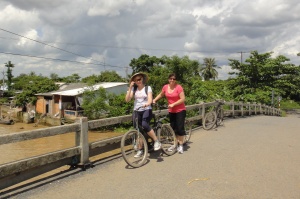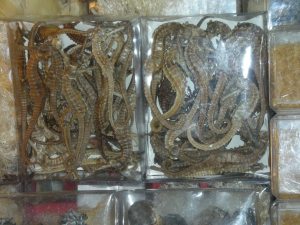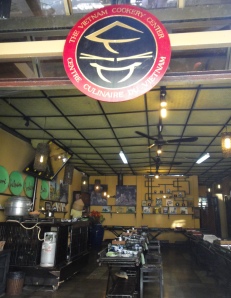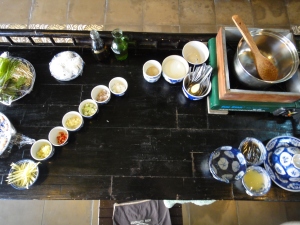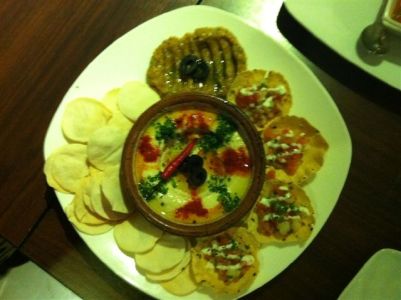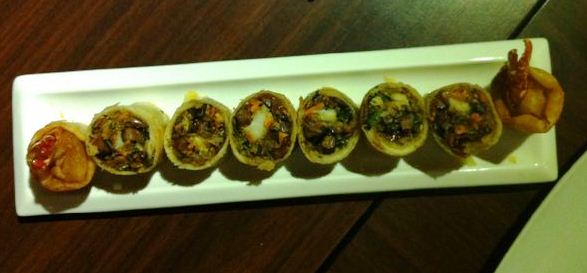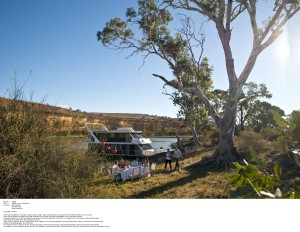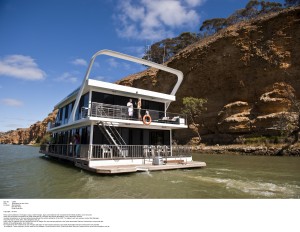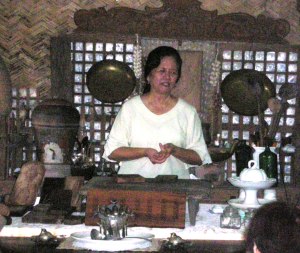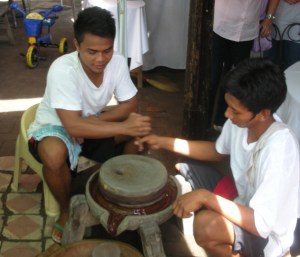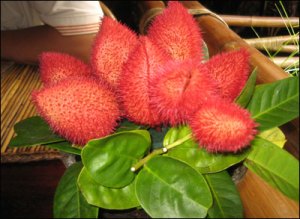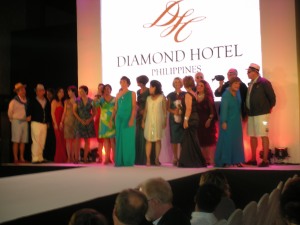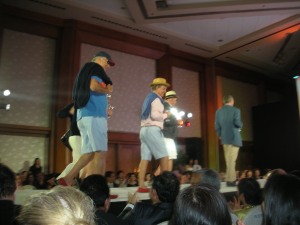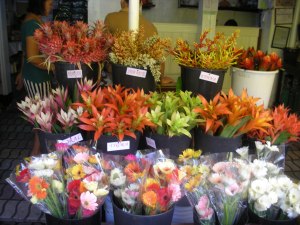 The Flowers
The Flowers
All the names I know from nurse:
Gardener’s garters, Shepherd’s purse,
Bachelor’s buttons, Lady’s smock,
And the Lady Hollyhock…
by Robert Louis Stevenson
Well, we didn’t find Lady’s Smock or Hollyhocks, but then the Dangwa market is a million miles from London’s Covent Garden, somewhere in the wilds of Manila. To be precise, it is tucked behind Tondo, north of the River Pasig from Intramuros, and about a 20-40 minute drive from Makati depending – as always – on the traffic. And it gets its name, less-than-poetically, from the Dangwa bus depot in Santa Cruz and Sampaloc.
Dangwa is Manila’s largest fresh flower market. Reputedly set up in about 1976, it was then surrounded by middle class neighbourhoods, obviously all on the look-out for freshly cut flowers to fill their homes. The market rose to glory during the Marcos Era, when it provided vast quantities of flowers for the florists who stocked Malacanang Palace. By 1994, the market was open 24 hours, 7 days a week, with flower deliveries arriving mostly in the late evening to ensure freshness and longevity.
 Flowers pour in daily from all over the Philippines, and from as far afield as Ecuador and the Netherlands. And this wholesale market is still a popular source of fresh flowers for local florists. Peak seasons include Holy Week, Valentine’s Day, All Saints Day, Mother’s Day, and Christmas, when prices soar. On Valentine’s Day, customers will flock to the market until almost midnight.
Flowers pour in daily from all over the Philippines, and from as far afield as Ecuador and the Netherlands. And this wholesale market is still a popular source of fresh flowers for local florists. Peak seasons include Holy Week, Valentine’s Day, All Saints Day, Mother’s Day, and Christmas, when prices soar. On Valentine’s Day, customers will flock to the market until almost midnight.
It has been suggested that late evening or very early morning are the best times to visit, but we ignored all such ridiculous advice and arrived at the more civilized hour of 10am. A small boy ushered us into a parking space outside Chow King and then attached himself to us for the morning. This young but cheeky guide then proceeded to present us with single red roses and pink carnations, till we had to tell him to stop pilfering the stalls.
 The market stalls spread up and down several streets. We began our walk at a covered market, wandering past banks of vividly coloured daisies and walls of roses. Glorious arrangements for weddings and funerals were set up on bamboo tripods down the centre of the street, and clusters of smaller, rainbow-coloured table decorations dotted the pavements. We cheerfully acknowledged a stray poinsettia, gerberas, irises and carnations.
The market stalls spread up and down several streets. We began our walk at a covered market, wandering past banks of vividly coloured daisies and walls of roses. Glorious arrangements for weddings and funerals were set up on bamboo tripods down the centre of the street, and clusters of smaller, rainbow-coloured table decorations dotted the pavements. We cheerfully acknowledged a stray poinsettia, gerberas, irises and carnations.
It was fun, too, to introduce ourselves to the tropical plants – note that these will last longer in the heat than the more vulnerable imported flowers.
~ See those soft, velvety, tightly crimped celosias in musky pink, dusky red and dusty orange?
~ And the banana-coloured ‘Mickey Mouse ears’? Although, personally, I think they look more like giraffe heads.
~ And look at the extraordinary, prickly red pineapple flower!
One stall was choc-a-block with greenery – ferns, variegated leaves, grasses – another boasted a pool of blue chrysanthemums. We found huge white orchids bowing gracefully from terracotta pots; fragrant, butter-coloured cassia in vast, grape-like bunches; numerous varieties of regal heliconias, with their distinctive geometric stem pattern some that can grow as tall as 30 feet. Some looked like bright orange crab claws, others resembled pink flamingos. We stroked the watermelon pink torch ginger, soft and girlish, but with a slightly unpleasant scent. And I love those lanky shower heads – some kind of water lily..?
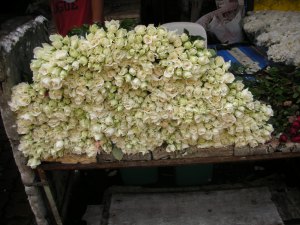 We wandered down the two or three streets that are closed to cars, but the river of flowers didn’t end there, flowing down the narrow pavements along the traffic-laden roads. As we dodged jeepneys and pedicabs, potholes and puddles, I suddenly realized why it might be better to come earlier. Gradually our arms filled with newspaper wrappers. I couldn’t resist the deep marmalade rose buds, despite knowing they would wilt like braised cabbage in a couple of days. They did too – not lasting even a day, but drooping limply over the edge of the vase like languorous ladies-of-leisure before dinnertime. But they did smell sweetly nostalgic.
We wandered down the two or three streets that are closed to cars, but the river of flowers didn’t end there, flowing down the narrow pavements along the traffic-laden roads. As we dodged jeepneys and pedicabs, potholes and puddles, I suddenly realized why it might be better to come earlier. Gradually our arms filled with newspaper wrappers. I couldn’t resist the deep marmalade rose buds, despite knowing they would wilt like braised cabbage in a couple of days. They did too – not lasting even a day, but drooping limply over the edge of the vase like languorous ladies-of-leisure before dinnertime. But they did smell sweetly nostalgic.
I also acquired some hardier flowers which are still standing upright a week later. Much to my delight, I discovered stalks of achuete – like pod-shaped rambutan – feeling very proud to recognize them after only being introduced in Pampanga quite recently. I had to ignore the lilies, they give my husband instant hay fever, but I found some interestingly pale, corn-coloured flowers, stiffly shaped like a fossils or a centipede on a stick – but actually, I later discovered, nicknamed for the rattlesnake.
 And everywhere we looked we saw those waxy red anthuriums with the large stamen you need to touch every time to check they are not made of plastic. We nodded to stately vases filled with white calla or arum lilies that I hadn’t seen since I was a child, when they grew under our almond tree, happy feasting for snails. We also unearthed some mini ones in daffodil-bright-golden-yellow, and others of a dusky claret or mangosteen.
And everywhere we looked we saw those waxy red anthuriums with the large stamen you need to touch every time to check they are not made of plastic. We nodded to stately vases filled with white calla or arum lilies that I hadn’t seen since I was a child, when they grew under our almond tree, happy feasting for snails. We also unearthed some mini ones in daffodil-bright-golden-yellow, and others of a dusky claret or mangosteen.
By the time we decided to flee from the heat, the boot of the car was heaped high with flowers of all kinds and colours. We gloated over our purchases which included a couple of tall and promising vases. Now if I only had some talent for flower-arranging…









